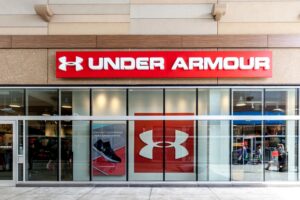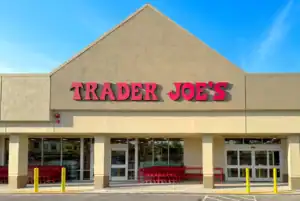April 28, 2009
CSD: Can Packaging Boost Sales?
By Julie Crawshaw
Through a special arrangement, presented here for discussion
is an excerpt of a current article from Convenience Store Decisions magazine.
Last November, McDonald’s reported that 82 percent of its packaging in its
nine largest markets is now made from renewable materials. Increasingly, convenience
store retailers are following Mickey D’s lead, seeking to capture a greater
share of takeout sales as well as respect the earth with reliable, environmentally
friendly packaging that won’t drive up the cost of takeout meals.
Historically, environmentally friendly packaging materials have been niche
products, alternatives to the traditional paper, aluminum and plastic polymer
products, said John Burke, president of Foodservice Packaging Institute Inc.
(FPI).
“What we’ve seen, particularly over the last four or five years, is a
movement of these products into the wider marketplace,” Mr. Burke said. “In
the U.S. take-out market, I would describe this as pretty much of a West Coast
phenomenon, and in terms of the overall marketplace, ‘green packaging’ is still
more of a university foodservice type of thing, but the demand from consumers
is there.”
Those considerations resonated with Jerrod McPherson, co-owner with Trent
Lee of Fargo, N.D. Cheetah Marts. Most of the packaging Cheetah Mart currently
uses is recyclable, with over 90 percent of the containers, including those
for salad, soup and their very popular caramel rolls, made from recycled materials.
“When it comes to adding packaging, there’s no question we’ll take a close
look at renewables because it’s just the right thing to do,” Mr. McPherson
said.
The only major customer feedback that Indianapolis-based Village Pantry has
received about packaging was when the c-store added paper and Styrofoam cups
for coffee and plastic and Styrofoam for cold drinks, offering his customers
a choice of materials. “If we had a lot of customers asking for it, green
packaging would be higher on the priority totem pole,” said Chad Prast,
director of foodservice for Village Pantry. “Even now, if a vendor comes
in with one container that’s green and one that’s not and the costs are comparable,
we would definitely go with the green.”
Mr. Burke noted that packaging that uses the biopolymers and non-cellulose
paper materials that constitute today’s green packaging is only green to a
point. Unless the consumers who purchase the food in those containers recycle
the packaging appropriately, retailers may be spending extra money for them
for little or no environmental benefit.
“The challenge in foodservice packaging is that 70 percent of it goes
out the front door. Where it goes after that is anybody’s guess,” Mr.
Burke said.
Discussion Questions: How much of a selling point is green packaging at
retail? Is the likely sales lift from moving to green packaging worth the
investment for convenience stores?
Discussion Questions
Poll
BrainTrust
Recent Discussions







In the present economy green is on consumers’ minds, but value is paramount. If all things (read price and value) are equal, consumers will opt for green, but if green causes the price to rise, consumer interest declines.
As more and more retailers and manufacturers turn to green packaging the prices for it will decrease. This will make the green choice a no-brainer for consumers.
Right–price and value rule today. Green is value-added. For comparably priced items, green will win out. However, I don’t believe we are in an economy that encourages most shoppers to pay extra for green.
The good news in the downturn is that money-saving and green are often comfortable bedfellows. This is good for our wallets and the planet.
I am still finding that there are three different types of “green” consumers, where packaging, design, and product names, are making a difference:
Earthy Green Consumers:
– These are the folks that are highly committed, maybe even evangelistic, about the environment.
Pastel Green Consumers:
– This is the group most likely to be affected by packaging. They don’t know it’s “green” unless you point it out.
Trendy “Neon” Green Consumers:
– These folks will buy environmental friendly products if the packaging, flavor, or price, does not repel them from being conscientious.
Shucks. Max said it all.
Unfortunately, this story gave me a slight chuckle. In the vast majority of cases, the c-store customer has little in common with the “green” shopper. As a regular in c-stores, I see plastic, plastic, and more plastic. And, it’s not biodegradable, nor is it recycled. Hopefully, California will lead the way. But, with all of their other problems, that may be a stretch.
I agree that “Green” consumers come in many shades, but retailers are moving to more sustainable choices. Shoppers are getting the message and making their own choices as information becomes available.
The type of packaging used matters to consumers. In many areas, consumers are talking directly to the retailers and restaurants about the type and amount of packaging used. Packaging is a matter of choice, and making the better choice in terms of sourcing, use, and end of life makes a difference for all of us.
“Verde que te quiero verde,
Verde vient, Verde ramas.
Green how I love you green,
Green wind, Green branches.”
Still, if green is the focus
Over captivating innovation
The effect can be Hocus Pocus.
Maybe I’m overly optimistic or live in a “green”-er state than most, but I feel like green packaging at c-store is pretty prevalent. There’s only so much you can do around individually-packaged items, and take-away packaging is not outrageous at all.
Where I’d really like to see more progress made on packaging is in children’s toys. They seem like the most egregious offenders today when it comes to over-packaging.
Ok, this might lead to one of my better non sequiturs but I think there is a great analogy here between “green” and bottled water. Can anyone remember walking into a store and asking for a cup of water? Or even public drinking fountains? How long has it taken for consumers to expect to pay for bottled water?
The same thing is going to happen with the green initiative. I think everyone understands the benefit but the challenge, like others have said, is that the upfront costs must increase. Unless you live in a bottle deposit state, you haven’t paid anything for the recovery or disposal of the non-green containers. By moving those costs upfront, consumers are going to have to shell out more. This is similar to the whole debate around cap and trade, which creates a cost increase for energy because we are acknowledging it is necessary to stop dumping CO2 into the air.
I agree with others who have said basically that costs will keep coming down and consumers will eventually come around to the green alternative. Then again, my grocery store still offers paper, plastic, and BYO. So the advantage of green has to be well communicated. No one is going to want to pay today if they can’t see a clear benefit for tomorrow. The challenge for retailers is to communicate the benefits in such a way that it helps build the corporate brand and justifies the extra cost in the mind of the consumer.
Al McClain touches on an interesting point when he said “the c-store customer has little in common with the ‘green’ shopper.” The real question for a retailer (C-store or otherwise) to ask about green packaging is not whether they can charge $0.08 more for the product with the greener package, but whether the *basket* of the person who buys the green product is larger or whether they shop more frequently than the other shoppers in the store.
Tesco’s Fresh & Easy markets are re-defining the C-store in the U.S. even as we speak. And they seem to be capturing a lucrative clientele, in part because of their green commitment.
Perhaps the focus for c-stores should not be that their traditional clientele don’t care about about green packaging, but rather that they should find ways to move beyond the limitations of their traditional clientele.
The biggest obstacle I see is in recycling these materials. The first step in making green packaging available is an extremely valuable one. I choose take away places that do not use Styrofoam, for example. The second step is getting people to recycle. What I commonly see in offices, friends’ homes, in cities across America is the lack of recycling programs. People don’t have the option of putting recyclables back into the process. Instead they throw containers into the garbage with everything else.
Although a recent study shows that 70% of Americans want to buy green, only 40% are willing to pay more for those products. Until environmentally-responsible packaging becomes the mainstream, costs of green products will be higher on the average. In c-stores, this point is even more critical. Others here have mentioned the demographic of the majority of c-store shoppers. Do they care about green?
Food manufacturers need to show value beyond the price of their products. That’s tough to do however even using simple things like the corn oil-based packaging from suppliers like Cargill’s NatureWorks can be promoted as sandwich containers, etc. Also, at an even more broad level, companies including Nestle are embarking on efforts to build a long-term sustainable business by stepping up to help solve some of the greatest challenges the world is currently facing, like hunger, nutrition and food safety. Their campaign, “Creating Shared Value,” aims to make Nestle known as a health, wellness and nutrition company, as opposed to simply a food manufacturer.
If more “branding” efforts can become successful, like Nestle’s, perhaps consumers will find intrinsic value of these products in the c-stores and elsewhere.
In a study we did called “Millenials Green?” where we surveyed over 1500 Millenials on their attitudes towards being green, one thing was very clear: they ‘expect’ retailers to be ‘green’ and to provide healthier product options in a more sustainable manner and in a better environment… but retailers had better not charge them for it. In summary, the prevailing Millenial thought is, “It’s great that the packaging is sustainable, but if it’s going to cost me more, forget it.”
Frankly, we were a little surprised by that, but given the conviction of the response, we’d all better take it to heart.
(At the risk of sounding naive,) I think well-conceived green packaging (starting with reduced packaging) would be a win-win-win: lower cost for the retailer, higher acceptability with the consumer and better for the planet.
On a different note, we do conveniently ignore the true cost of the excessive throw-away packaging. If the cost of disposing that were added to the price of the product, the switch over to green packing might be faster.
I recall reading about a protest in the UK a couple of years ago by consumers who unwrapped excessive packaging at the cash-till and left it there – imagine that at your local supermarket on a Saturday!
Take a look at who it is that frequents convenience stores. There are a lot of young people who run in and out, shopping for a quick protein bar and an energy drink, and their store of choice is the convenience chain. If they were given a choice, they would absolutely choose the greener store, not because they are so involved with recycling that it has permeated their life, but instead it is a reliever of guilt, and it allows them to feel good about their shopping decision, just because they know they should live a better life.
That being said, many members of the Net Generation are strongly involved with the green movement, and they are the influencers within their circle of friends. Offering them a green solution will go far with them, and they in turn will share the information with their friends. If I were with a chain such as 7-11, I would offer a Protein/Ginseng Slurpee in a biodegradable cup, with a potato starch straw. With each purchase, I would donate ten cents to Feed America.
Watch the sales grow!